Hello everybody!
I didn’t post any ‘major updates’ on the War in Ukraine for weeks. On one side, I was – and I still am – extremely busy with my work. That’s going to remain that way for a while longer.
Another reason for my ‘stop’ in reporting about the war in Ukraine is also the reason why am I now posting on Substack instead on Medium. Essentially, administrators of Medium began accusing me of publishing ‘hatespeech’ – because I’ve quoted soldiers of the ZSU who called their generals ‘faggots’.
To make sure: yes, I know that’s no nice word. However, complaining about its use without actually reading what I wrote is both ridiculous and offensive. That became plain obvious when the administrators in question (plus certain ‘colleagues’ in the USA) complained I’ve used it (once), and asked if I think I’ve explained its use properly. Sufficient to say: as can be seen when actually reading my posts of the last three months (transferred to this account, meanwhile) I’ve used that expression at least 3-4 times.
As far as I’m concerned: that’s explaining everything. Read and at least try to understand. If you can’t understand: ask for explanation. That’s the fundamentals of something called ‘communication’. And, rumor has it: communication is the essence of humanity. On the contrary, jumping to conclusions on basis of catching and hanging on a single word is – as much as typical for our times – nothing else than dumb and offensive. If for no other reason then because I’m both mature and sober enough, and certainly not in need of some lazy or under-educated teenagers teaching me what should be ‘right’ or ‘wrong’. Enough said.
AIR WAR
The GenStab in Moscow seems to have abandoned its pretensions on destroying the power grid of Ukraine. Right now, to me it’s unclear if it completely run its stocks of ballistic- and cruise missiles dry, or concluded it’s pointless to keep on trying because of improved Ukrainian air defences, but: it’s been nearly a month since its last big-style, determined effort to collapse the system, and Kyiv has meanwhile announced its intention to resume exports of electricity to the EU. Make no mistake: this shouldn’t mean that the Ukrainian power supply system is now in excellent condition. At most, it means it’s stabile enough for the time being. It is still going to take most of this year to be completely repaired.
This should also not mean the status of ground based air defences of the Ukrainian Air Force and Air Defence Force (PSU) would be anything like ‘excellent’. Deliveries of IRIS-T, NASAMS, Sky Guard/Aspide, Crotale, upgraded S-125 Neva, and Osa AKM-P1s so far were only sufficient to limit the wear and combat attrition of available S-300, Buk M1, and Osa AKM systems: not enough to replace them, or even to enable the PSU to cover all the strategically important installations to the sufficient degree. Deliveries of all the Patriots, additional NASAMs, remaining IRIS-Ts, etc. are going to take months longer. Sometimes, they are not going to mean a true reinforcement: rather ‘replacement for things lost or dysfunctional equipment’. For example, RUMINT has it that the two Spanish-delivered MIM-23 I-HAWK SAM-systems (both of US origin) were dysfunctional to the degree where they’ve had to be ‘sent back West for repairs’. Also, it seems the idea of mating RIM-7 Sparrows to Ukrainian Buk M1s proved not to be that easy to realise.
Bottom line: the status of PSU’s ground based air defences (GBAD) is such that the Russian Air-Space Force (VKS) remains capable of establishing at least temporary aerial superiority over selected portions of the frontlines. Over the last month, we’ve seen it managing this on almost daily basis in the Avdiivka area in particular. There, the combination of electronic countermeasures (ECMs), anti-radar missiles, UAVs used for reconnaissance, loitering precision guided munition (LPGM) like Lanclets, and ‘classic’ PGMs (like UPAB-1500 and UMPK) is causing constant and severe problems to the ZSU.
I have my doubts about the UPAB-1500 being manufactured – and/or deployed – in large numbers. But, the UMPK certainly is. The conversion kit is crude, but simple to manufacture in sufficient numbers. That is making this weapon a (very unpleasant) factor, meanwhile.
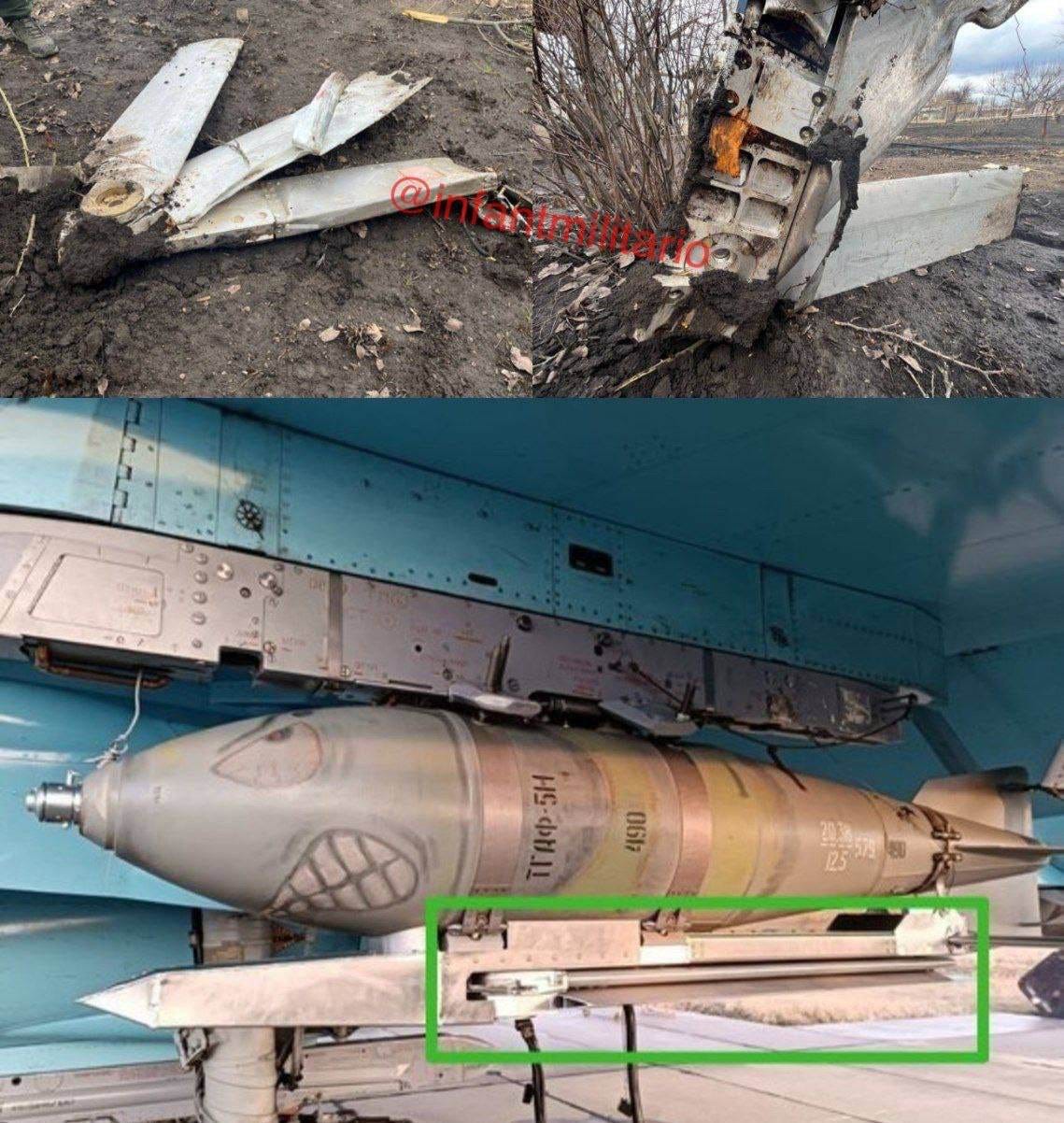
How’s all of that ‘working’?
The Russians are deploying their ground-based electronic warfare systems very close to the frontlines (so close, these are regularly hit not only by Ukrainian HIMARS or RPV LPGMs, but by tube-artillery too): the combination of proximity to the targeted zone and the power of their emissions is enabling them to temporarily overwhelm early warning- and fire-control radars of Ukrainian air defence systems. Su-30SMs and Su-35s are keeping Ukrainian radars under pressure with help of their Kh-58 anti-radar missiles, too. Additional pressure is exercised by heavy deployment of Russian UAVs to detect and track Ukrainian SAM-systems, and then - if they’re close enough - attack them by Lancets, as in this case (you can see the Lancet approaching, as a ‘small grey speck’ at the bottom of the photo):
In this fashion, the Russians are creating what could be described as ‘safe corridors’ through the areas protected by Ukrainian GBAD. These corridors are then used by Su-34s – apparently operating at high speeds and altitudes of 12,000m or higher, and additionally protected by their on-board-ECM-systems – to attack. The combination of high altitude and high speed is enabling them to release UPMKs from ranges of 30-40km away. Indeed, some are reporting attacks from as far as 60km away: this is likely to sound as ‘too much’ to many, but, should be within realms of possible. Point is: the jet carrying such weapons is within the ‘danger zone’ of the Ukrainian GBAD for a very short period of time (about 30-60 seconds); releases the weapon and turns away. That’s it.
Theoretically, the UPMK is large (and crude) enough to be detected, tracked, and shot down by systems like Buk M1 and Osa-AKM. However, the combination of Russian ECM, anti-radar missiles, shortage of SAMs, and short duration of such attacks are severely limiting their ability to operate safely, and react whenever necessary.
Conclusion is on hand. The VKS is delivering severe blows upon the ZSU and the PSU, and the latter two have too few means – too few electronic warfare systems and, meanwhile: insufficient stocks of surface-to-air missiles – to react effectively. This is not going to change unless Ukraine gets not only enough SAMs to protect its major urban- and industrial centres, but also its power grid, AND at least most important sectors of the frontline.
….the essence of this is answering all the possible questions to the ability of the ZSU to run any kind of major counteroffensives on the ground in the near future, too.
….and the issue of ‘F-16s for Ukraine’. Sorry, but it remains a cold fact that no ’24 F-16s’ – not even ‘240 F-16s’ – could change the situation by any kind of a serious degree. That would much more electronic warfare systems, many more early warning radars, the construction of a secure communication systems….and air-to-air missiles at least matching the performance of R-37Ms deployed by Russian MiG-31BMs and Su-35S. Otherwise, any ‘F-16s’ delivered to Ukraine are going to end in exactly the same fashion like PSU’s MIG-29 shot down on 10 February. Absurdly, the Ukrainian military censorship subsequently left the local media quote the pilot (who ejected and survived) as reporting his aircraft something like, ‘spontaneously self-disintegrated’. Sorry, but these are practices of Pakistani military spokespersons, not of somebody who can be considered a reliable official source.
To make sure: I understand the PSU. They’re facing impossible odds, and have suffered heavy losses in pilots and aircraft while achieving very little in return. They have next to no means left to change anything: the force is down to flying 5-8 attack sorties a day, perhaps as many scrambles by MiG-29s and Su-27s. No surprise everybody is frustrated. However, in air warfare there’s no place – and no reason – for mythology: air warfare is a matter of physics and mathematics. Even more so if the ZSU troops on the frontlines know (and very well at that) what’s going on in the air above them.
BATTLE OF DONBASS
Generally, the frontlines in eastern and southern Ukraine are where they used to be as of mid- to late March. Shouldn’t mean thee were less losses, or the situation is less critical – and that on both sides.
Kremina…ZSU – which is: 140th Marine – is slowly mopping up the big forest in the Bratska Mohyla area, south of this town. That said, the VSRF is said to have regrouped and built up a large concentration of forces in the Kremina area: the re-built 90th Tank Division, 144th Motor Rifle Division, several BARS regiments and most of the II Army Corps (‘Separatists’) should be deployed in the second line – as an ‘operational reserve’.
Bakhmut… in early April, Gerasimov deployed the entire 98th VDV Division plus an entirely new PMC to replace the battered Wagner. Sure, two or three companies of the latter are still present, and claiming all the successes for themselves, but in essence, it’s the VDV and that new PMC that are operating there. Flanks north and south of the ruins of this town are held by a mix of motor-rifle and VDV troops, too. The VDV’s tactics in Bakhmut is different than that of the Wagner: it’s pulverising everything in its way by TOS-1s and heavy mortars before advancing. For example, on 3 April, it secured the AZOM Works, reached the hospital and the Metallurg Stadium, and then pushed for the Police Station, Jail, Market, Hotel Atlantic, and the Bakhmut Railway Station 2. By 6 April, it reached the latter. By 7 April, the VDV assaulted the Schools No. 2 and 40 in the south, reaching the Chakovskoga Street, and thus cutting off the final stretch of the Road 0504 (connecting Bakhmut with Ivanivske and Chasiv Yar). The onslaught was stopped only through a series of – apparently ‘costly’ – Ukrainian counterattacks. One of these, run on 7 April, recovered most of the area between Chajkovskoga and Korsunskogo Streets.
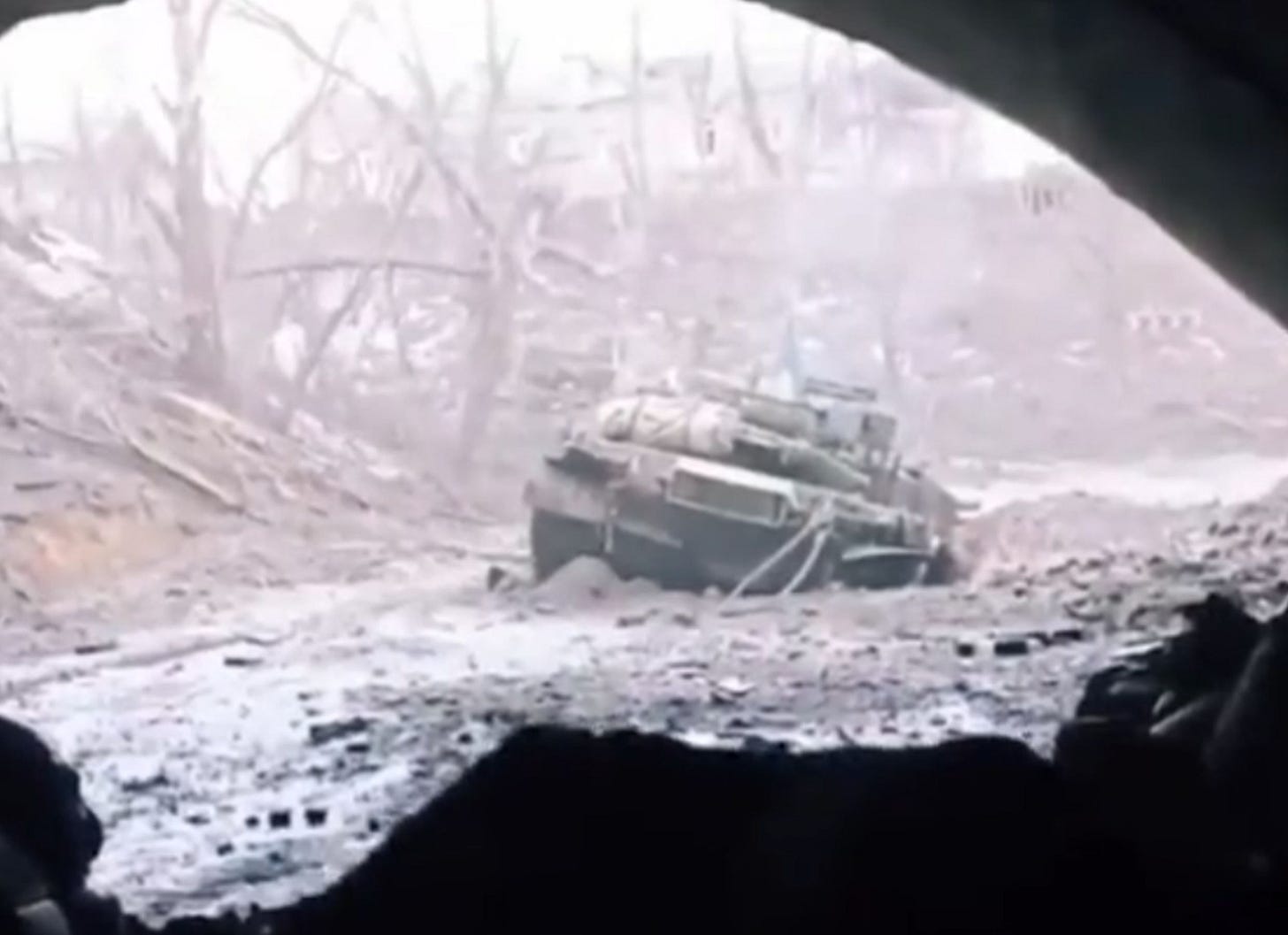
That said, the fresh Russian troops continued attacking, the last week, and have definitely reached the full width of the railway line before attempting to cross it. It was only the last two days the ZSU managed to force them out of the Avtotekhtsentr compound, west of the line, just for example. Similarly, heavy fighting between the Hotel Tranzyt and Hotel Atlantic (or their ruins) is still going on.
Notable is the ‘silence’ of ZSU units bearing the brunt of fighting inside Bakhmut of our days: 93rd Mech, 24th Mech, Border Guards, Skala Battalion, 125th TD, 3rd Spartan and the 3rd and 5th Assault Brigades. They’re doing their job and fighting: no ‘Soledar Debating Club’, no name-callings, no Nazi salutes, no tanks painted like Wehrmacht/Waffen-SS – and no running away like while the 46th and the 67th were around. Could be an ‘accident’, of course, but I think it’s none: rather something worth attention and keeping in mind for the future.
Avdiivka…As reported on Facebook about two-three weeks ago, the Russians launched a major attack from Opytne into the south-western flank of Avdiivka. Combined with air strikes, this disturbed and distracted the ZSU garrison – 53rd Mech, 36th Marine and 116th TD – sufficiently to enable another prong of the Russian attack to secure Krasnohorivka and then push over the railway line in direction of Stepove. That was about two weeks ago. Eventually, this advance was stopped by Ukrainian reinforcements – 71st Jäger, apparently – which threw the Russians back across the railway line and further towards Krasnohorivka (perhaps drove into the village, too). As of 12 April, the Russians were happy to claim they’re back to the railway line, and to have forced the ZSU to withdraw to the western side of the nearby stretch of the M20 highway, too.
That all said, and despite this stabilisation of the frontline, this area remains one of particular concern for the ZSU – because of above-mentioned, highly-effective Russian air strikes (some of which have knocked out entire groups of Ukrainian armoured vehicles: FAB-500M-62 is, after all, much more powerful than any kind of an artillery shell), but also because of the Russian grinding through the trench system from Opytne in direction of Sjeverne.
Mariinka… generally, through February and March the Russians have secured everything east of and up to the Druzhby Avenue, and ever since are pushing through the Donetsky Kombinat (north) and Prat Ahro Resurs compound (south) in western direction. Apparent idea is to force Ukrainians to withdraw by threatening to encircle their positions in what is left of the north-western quarter of this town.





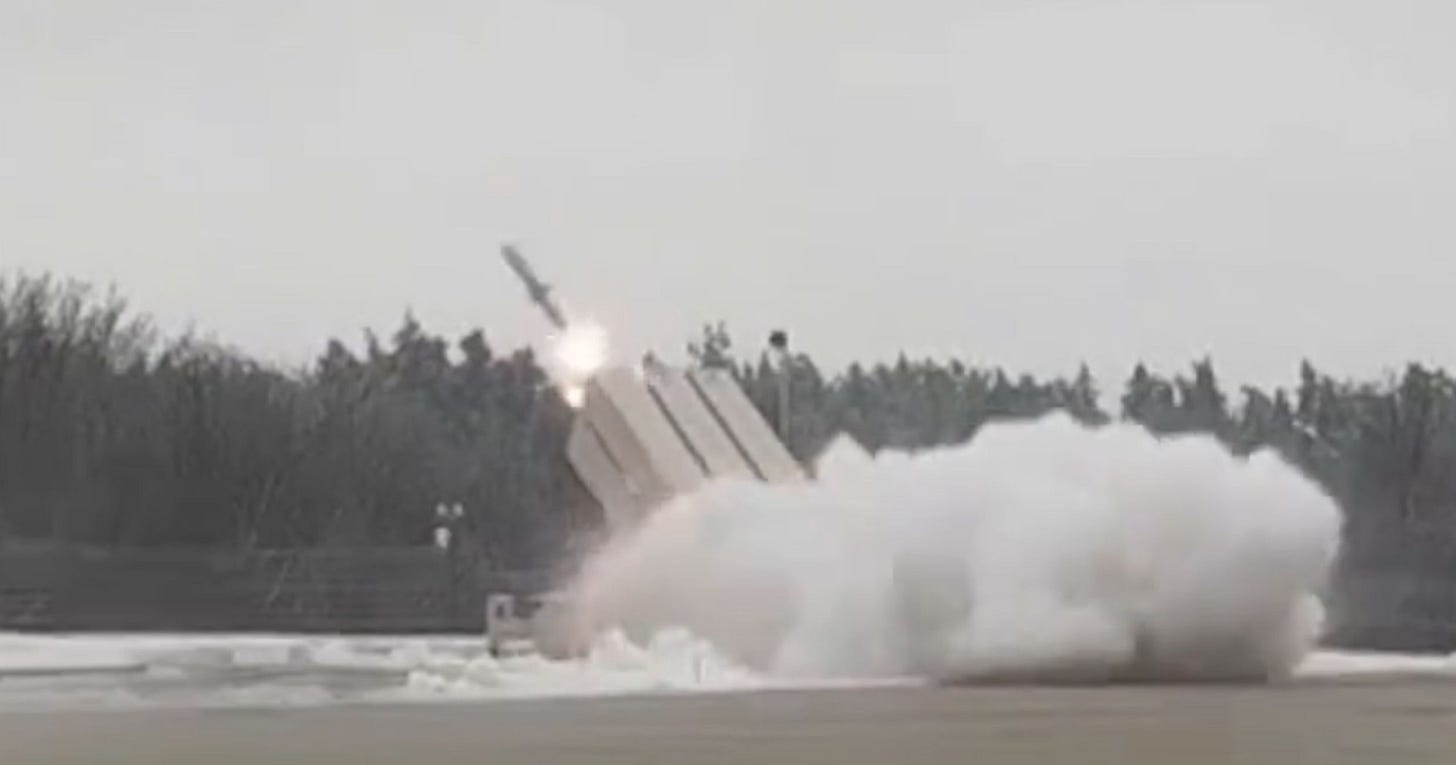

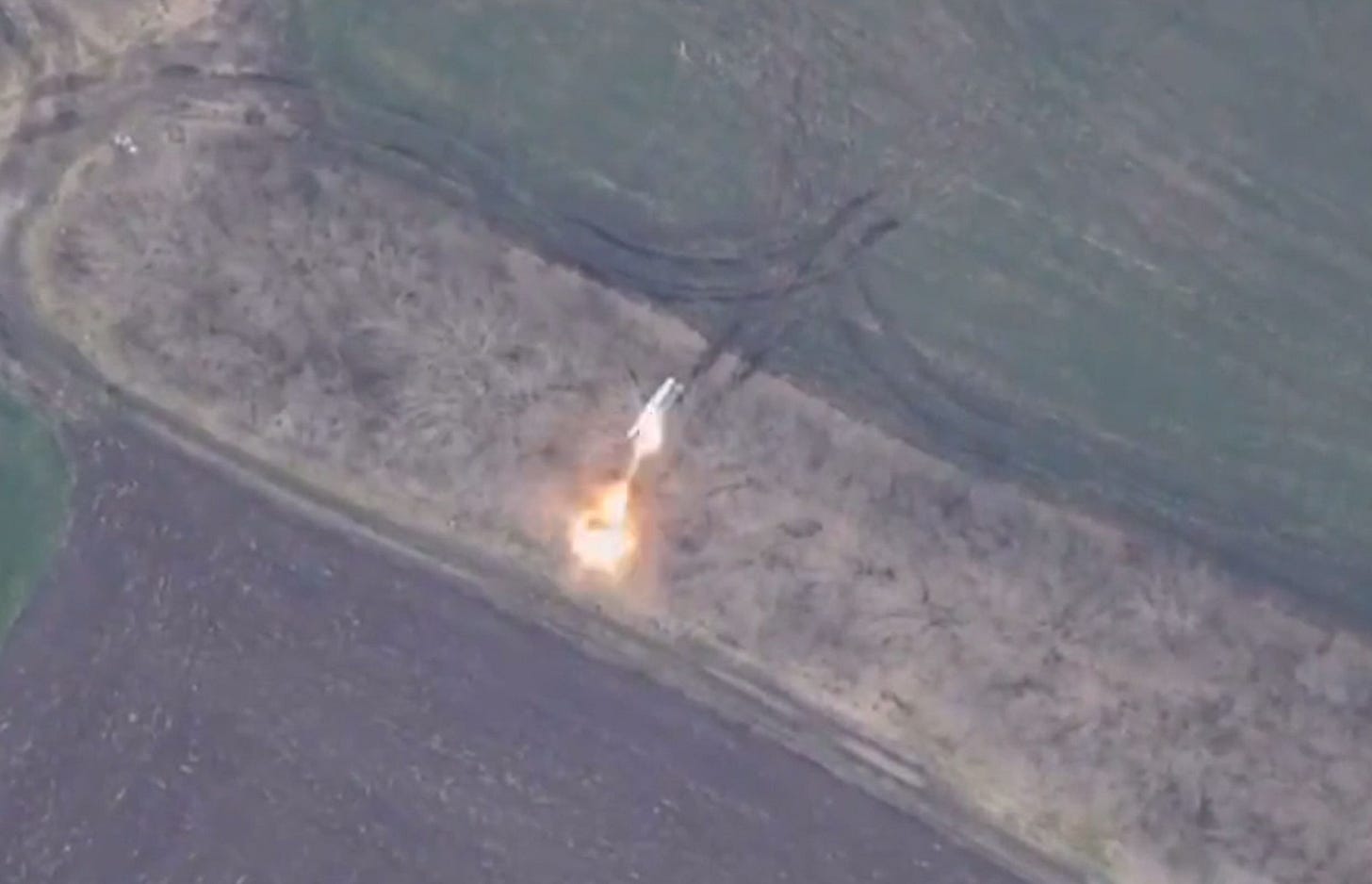
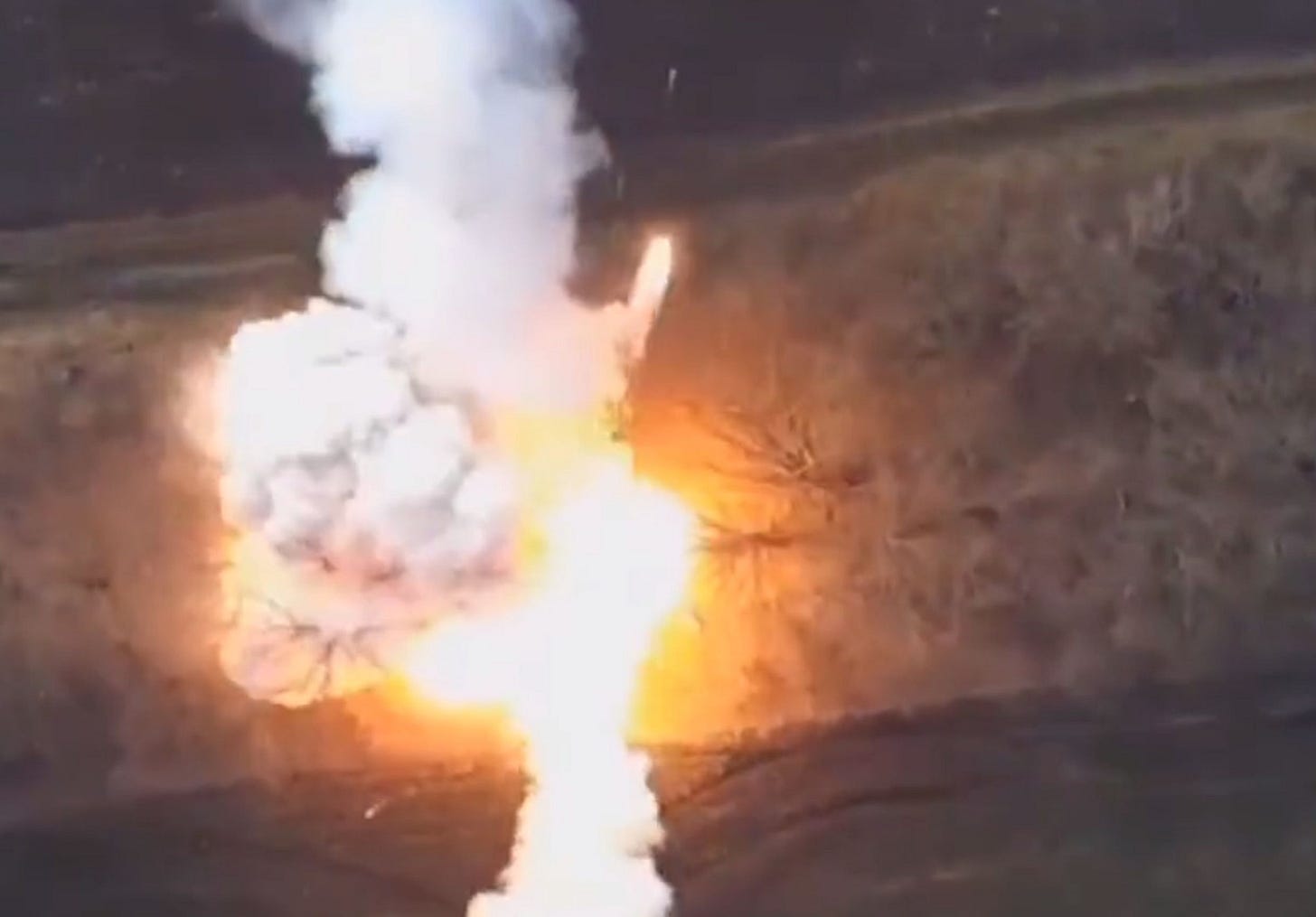
Hi Tom. Good luck on this platform. Always pleasure to see your opinion and sarcasm.
goddamn faggots stop interfering with Tom's work!